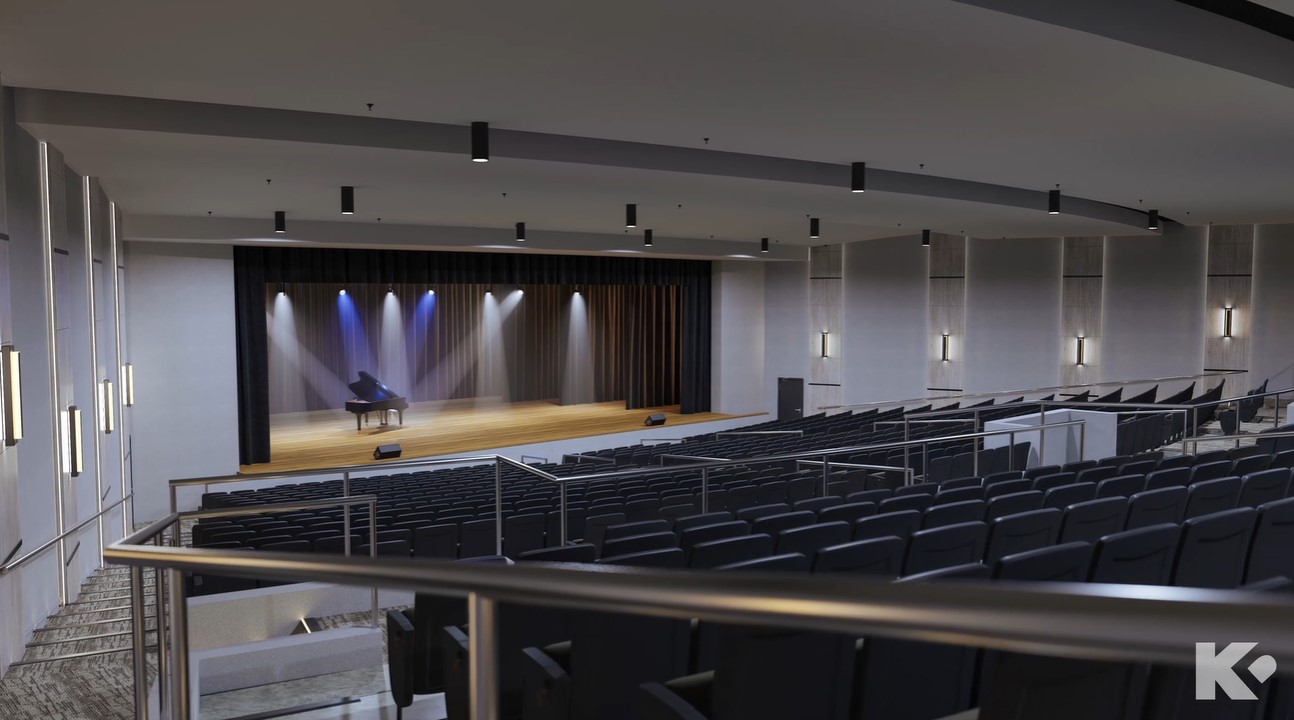Post-production for animation is the last step in creating an architectural 3D video. During this stage, a CG artist adds final touches to make a presentation truly shine. Fine-tuning small yet essential details in the course of post-production can literally make or break the overall atmosphere and visual appeal of a 3D video. But what are those details? And how to make sure you get them right when submitting a brief for 3D artists?
As an architectural visualization studio, we know exactly how to make an animation stunning. Read on to learn about 5 post-production techniques that can ensure your next project presentation takes your client’s breath away!
#1. Adding Extra Items
When all major elements of the 3D animation, such as the building and its basic environment, are ready, the work proceeds to the compositing stage. During it, a CG artist adds secondary items to create a certain story. These objects can include people, plants, animals, cars, decor elements, and so on. They must all work well together, shaping the required narrative.
Usually, at this stage, a 3D animation artist uses objects shot with Chroma key technology. This means that they have been filmed in motion against a blue or green background. The latter needs to be removed later on so that these objects could be seamlessly put into another footage. So, during this phase of post-production, a CG artist uses special plugins and programs to erase the green/blue screen and blend items into 3D animation. After compositing is finished, the post-production process moves on to creating the special effects.
#2. Applying VFX
Special effects in architectural 3D animation do not mean some flashy explosions one might see in movies. In archviz videos, VFX is mostly used to animate small intricate movements. These can be, for example, wind gusts touching trees or people’s hair, flowing liquids, flames in a fireplace, fabric movements, and so on.
VFX is also used for depicting weather conditions. Fog, snow, rain, and mist can all be added thanks to particle simulation systems. This type of VFX is often used in architectural walkthroughs, as specific weather conditions make scenes look more atmospheric and compelling. Special effects can work magic for the overall visual impact of an animation, so do not hesitate to specify them in your brief.
#3. Color Correction
Making corrections to brightness, saturation, and contrast of colors is among the final and most important steps in post-production for animation. In any visual arts, 3D animation included, colors play a vital role in conveying the desired mood. Even the slightest alterations in this aspect can change the feel of a 3D video and make it less or more eye-pleasing. So, a CG artist always strives to make colors as realistic and lively as possible.
#4. Using After Effects
Adobe After Effects is a software used in post-production for animation to make 3D videos the most lifelike and realistic. With this tool, a CG artist adjusts the camera and matrix settings to imitate real footage. CGI experts start with using camera lens effects: focus change, color aberration, sun flare, vignetting, diffusion, and so on. After that, matrix settings such as blur and noise are manipulated. As a result, the animation looks extremely realistic, just like a video shot with a professional camera.
#5. Adding Music and Text
As the last touch in post-production, music, voice-over, subtitles, and a company logo can be added. The right soundtrack can do wonders for setting the mood in an animation. It is best to choose a soft and subtle melody that will not distract attention from a presented architectural project. Overall, music should match the mood of the 3D animation. Otherwise, it might ruin the impression. To make animation and music work together even better, a CG artist can adjust the most powerful scenes in a 3D video to match the most dramatic part of a soundtrack.
If there’s a need to make animation more informative, a voice-over can be added on its own or together with the music. One can also include subtitles. Those can follow the voice-over, depict names of the presented properties, or give any other additional information.
Immerse clients into your projects with realistic 3D animations
3D architectural animation is a powerful tool to make your presentation breathtaking. CG video grabs attention and conveys more information about the project than any static image. And post-production for animation, when done right, ensures the presentation is exceptionally realistic, visually compelling, and atmospheric.
Our CGI studio pays attention to the smallest details during both production and post-production. If you need architectural animation services, contact us at ArchiCGI to get a stunning lifelike animation that will present your design ideas in the most impactful way possible!

Stacey Mur
Content Writer, Copywriter
Stacey is a content writer and a CG artist. Outside of work, Stacey enjoys musicals, Star Wars, and art talk. A proud Corgi parent.



